You might remember i-Brix from a couple of years ago (see: i-Brix – LEGO Lights Without Batteries & Wires). Many LEGO fans supported the project at that time and really wanted it to succeed, but the fundraising goal to launch the product was just too high, and there were also some kinks to work out in terms of safety regulations, and the distance the lights could work. Since then, Dustin Culton, the inventor behind i-Brix, continued working on and improving i-Brix, and now the project is back on KickStarter with a substantially lower fundraising goal that is already half-way reached. And there is still more than a month to go! 🙂
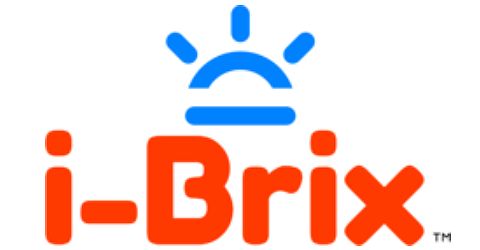
i-Brix is the first and only patent-pending wirelessly powered lighting system designed to be used with LEGO building components. It requires no batteries or wires in the bricks, giving you full freedom to build. The technology is similar to wireless cell phone charging, however it does not require direct contact with the charging surface. Also, the system is transmitting power real-time and therefore doesn’t actually charge the bricks.
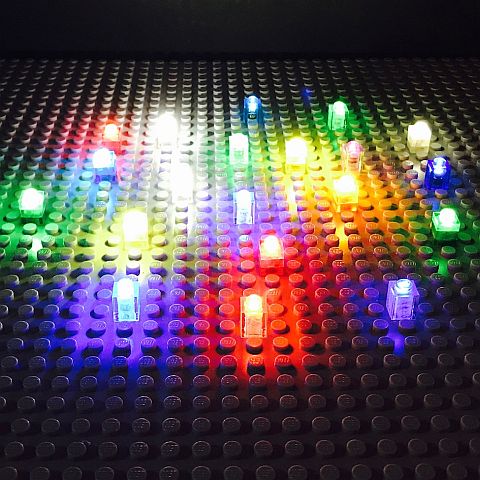
i-Brix has two components; the 10×10 inch Power Plate, and the i-Brix 1×1 transparent bricks with a LED light and receiver. The Power Plate can be placed underneath regular LEGO baseplates, and the 1×1 bricks are powered wirelessly from the Power Plate when positioned up to 8 inches above it. This is the first and only wirelessly powered system to feature this technology and also work at a distance!
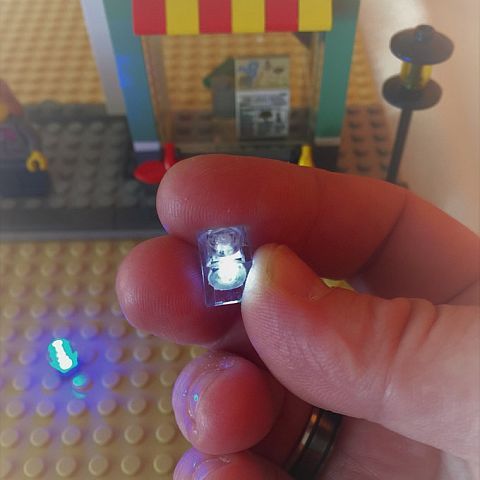
The fact that the i-Brix can be lit up without wires is amazing in itself. For example, you can light up your LEGO city, space station, or enchanted forest simply by placing the Power Plate under the baseplates, and adding the i-Brix transparent bricks wherever you want inside and outside the buildings, without having to route and hide wires. And there is another, even greater advantage; you can use the i-Brix bricks to light up moving vehicles! One of the major problems with wired systems has always been that they could not be used for small vehicles, because the battery-box had to be somehow hidden inside the vehicle for it to still remain mobile. With i-Brix you don’t have to do that. As long as the vehicle is placed on or hovers over the Power Plate, the lights will work!
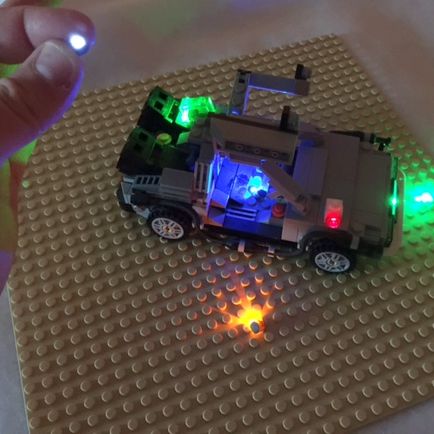
Dustin shares the following about the project: “As a kid, I would string incandescent Christmas light strands around my LEGO sets. (Hey, you work with what you can!) This was obviously not ideal, but plain clumsy, messy and not too attractive. As I grew into my AFOL (Adult Fan of LEGO) role, I started looking at the ability to add lighting in a better way – it shouldn’t require a bunch of wires, drilling, battery enclosures, etc. You should be able to add lights to your buildings without all of these potential nuisances. My goal was to make lights for bricks that could fit into one of the smallest enclosures possible, so that you could have the most flexibility when adding them to a model.”
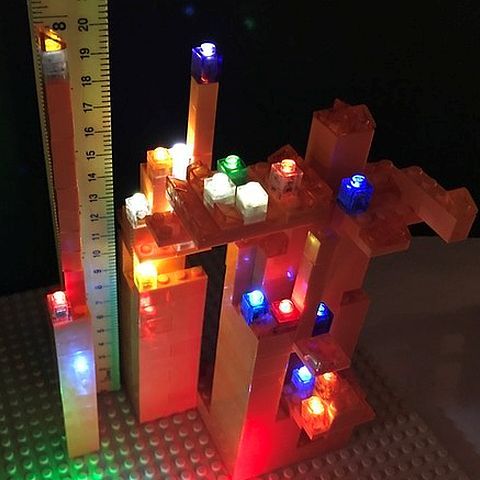
Just like many other LEGO fans, I was very excited about this project a couple of years ago, and it was disappointing that it didn’t reach its fundraising goal at that time. It’s great to see that Dustin didn’t give up, but continued to refine and improve the product, and brought it back with even better features and a much lower fundraising goal. That’s serious dedication! On the i-Brix website Dustin says: “One thing that we want our fans and followers to know is that unlike many other KickStarter campaigns, our product has been through several review stages, including multiple design and engineering refinements. We have even completed an FCC prescan to meet safety regulations (which it passed). We chose to do these tests before the KickStarter campaign, not after we collect funds from our supporters. We are taking the time and steps to make sure we introduce the best possible product available, which includes proper testing and thorough research.”
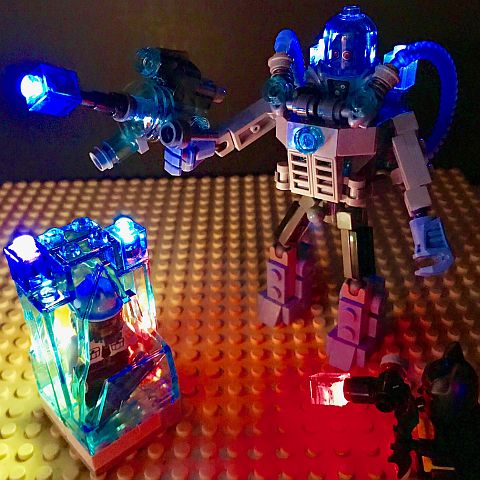
The KickStarter funding will be used for the following: 1.) Wrapping up any loose ends with the first and only patent-pending wirelessly powered lighting system available 2.) Mold fabrication for the i-Brix bricks that will hold the LED core, as well as actual brick manufacturing 3.) Transmitter and receiver production and assembly 4.) Finalization of engineering work and final product testing 5.) PCB production that holds the electronic components, including the LEDs 6.) Packaging for each i-Brix product 7.) FCC certification – i-Brix already passed an FCC prescan to ensure FCC compliance 8.) Fulfilling all backers of the KickStarter campaign!
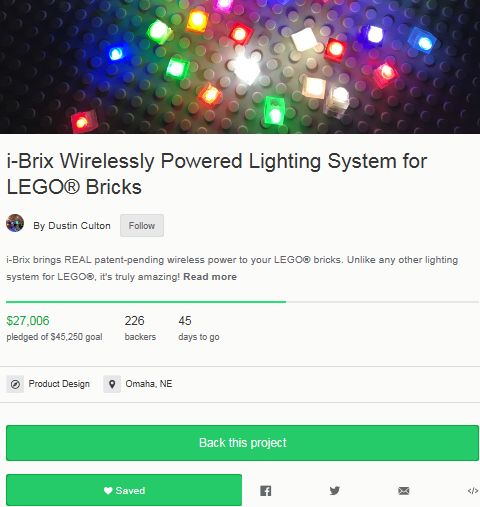
If you would like to learn more about how i-Brix works, see a demonstration video, and pledge your support, visit the i-Brix.com, or go directly to the i-Brix KickStarter campaign page.
So what do you think? How do you like the concept of wireless lighting for LEGO? Would you be interested to get them if and when they become available? Are you planning to support the project or have you already done so? Feel free to share and discuss in the comment section below! 😉
And you might also like to check out the following related posts:
- i-Brix – LEGO Light without Batteries & Wires
- Light Up Your LEGO Models with BrickStuff
- Custom LEGO Street Lights & More!
- Custom LEGO Light Bricks Now in Color!
- LEGO Light Bricks – More Options!
- LEGO Light Bricks – 12 x 12 Light-Up Base
- Let There Be Light! Light Up Your LEGO World!
- Light Up Your Halloween LEGO Haunted House!
- Bring Your LEGO Creations to Life with ATOMS!












Very interesting. How does transmitting electricity wirelessly work? If this is indeed a brand new technology, there might be other applications that could help raise the funds.
That’s probably the patent pending part of the technology. I can’t think of any other uses right now, but I’m sure there is some. It has to be very specific, as it only works up to eight inches, and it has to go through nonobstructive material like plastic. In the previous campaign, they had some booster plates to increase the distance. Is that still a thing?
Yeah, I haven’t seen a picture of the actual transmitting plate. That’s where all the magic is happening. 😀
Since the distance was increased, Dustin eliminated the booster plates.
It presumably uses electromagnetic induction, which is the same system that Qi cell phone chargers use and what many rechargeable electric toothbrushes use. A base generates a fluctuating electric field and induces a current in a coil of wire in the receiver.
This looks very intriguing and looks like they are very close to meeting their goal. It would be great if they could also do 1×1 round bricks, and the minifig heads in clear to use as streetlights in the modular buildings. I will be watching this with interest.
I’m not familiar with wireless power systems, and I’ve never even heard of wireless cell phone charging, so I am quite amazed by i-Brix. I wonder how it technically works… does the Power Plate transmit high-energy (and thus high-frequency) light waves to the receivers, which convert those waves into power for the light bulb in each brick? I’m not sure those waves would make it through plastic, though…. In any case it’s impressive, and more so thinking about the size that technology was fit into. A brilliant idea, I’m glad Dustin stuck to his project, and hopefully the KickStarter campaign will be successful this time. 🙂 If it is, and i-Brix becomes widely available, are there any estimates on how much one pack (Power Plate + bricks) will cost?
I have never used a wireless cellphone charger either, but they are definitely a thing. They look like a round pad thingy. “Inductive charging (also known as wireless charging) uses an electromagnetic field to transfer energy between two objects through electromagnetic induction. … Energy is sent through an inductive coupling to an electrical device, which can then use that energy to charge batteries or run the device.”
Dustin can answer the question about the cost, but my guess would be that it very much depends on demand. The larger the demand, the more they can reduce cost by manufacturing in larger bulks.
Ahh… I see. Electromagnetic induction makes more sense than what I was thinking. The capability of the i-Brix to be moved around above the Power Plate also seems to be an improvement over other devices currently using inductive charging. The induction method also partly explains why the bricks only work up to 8 inches above the Power Plate – the field is probably not strong enough beyond that range to provide power to the receiver. This is definitely some impressive technology, so hopefully the i-Brix patent succeeds.
Hmmm, 8 inches, that’s about 20 centimeters…
Yeah, so basically I-Brix can light up the first and second story of the Modulars, but not the third floor. So for example in the Parisian Restaurant, it could provide light for the street, the restaurant, and the apartment on the second floor, but not the rooftop apartment of the artist.
Yeah, I’m also really looking forward to I-Brix. In fact, I have been holding off on lighting up my Modulars because I was hoping that i-Brix will be back. Pretty exciting stuff. 🙂
I love the idea – so much easier than threading tiny wires into your creation and having to sand corners off miniature circuit boards. Hopefully their kickstarter campaign is successful, they make lots of sales and are able to bring down the cost, especially when shipping to Australia. Yes, lamplights would be a must have.
These lights would be great for the Christmas village! I really hope it reaches the goal! Kids would love these instead of having to wire everything.
That’s a really great idea, actually. I was thinking what to use the colored lights for, and the Christmas Village would be a perfect application! 🙂
Hi All – I hope you don’t mind me popping in to provide some input on the project. I think a Christmas Village is a great application! Perhaps it was an influence on our desire to have colored i-Brix. 🙂
Actually, I was surprised to see so much interest in all white sets. But, I started thinking about the applications and it makes sense. Also, you could take the white-LED bricks and place the small round colored translucent plates on top to create color.
I’m happy this technology came back. I pledged for this product to try it out as I have high hopes and big plans for the technology. If successful, hopefully the components will be available for sale later to expand on this system. I’d also like to see round bricks and head bricks for lightposts.
The biggest advantage I see i’s for kids to “play” with the system and secondarily for simple lighting and reconfigurable displays.
One concern I have for the technology is how much the luminance drops as lights get farther from the plate. A minor drop is fine. But I don’t plan to use this for modular buildings, which can have a self-contained power source and hidden wiring. But if you want to light up more levels, just build more power plates into your modular and hopefully that will work fine.
Brian, that’s an interesting point about the possibility of the luminance dropping as you get further from the plate. I haven’t seen this mentioned in the Kickstarter campaign, but I will send an email to Dustin and ask him about it. I will also ask him to answer your question here.
@BLProductions / @Brian / @admin –
The intensity of the light does roll off as you increase distance – I haven’t personally measured the lumens (level of light output), however I have tried to show in the campaign’s photos how they can perform further away from the base (transmitter).
I agree with the idea of kid’s playing with the system – to configure different designs, shapes, structures, etc – almost like a 3-D “Lite Brite”, so to speak.
Our plans do call for reducing costs of the entire system in the future – as with many KS campaigns, there are some developmental costs and initial production costs that are factored into the initial production run.
On a side note, we’re looking forward to hearing from backers or potential backers about where they plan on using their i-Brix systems. Feel free to let us know!
Great info! Thanks, Dustin! 🙂
Jang from jangbricks just posted a video of a prototype set.
Oh, yes, Dustin told me that was going to happen. I haven’t watched it yet, but when I get home tonight I will take a look and will also add it to this article. Thanks for letting me know. 🙂